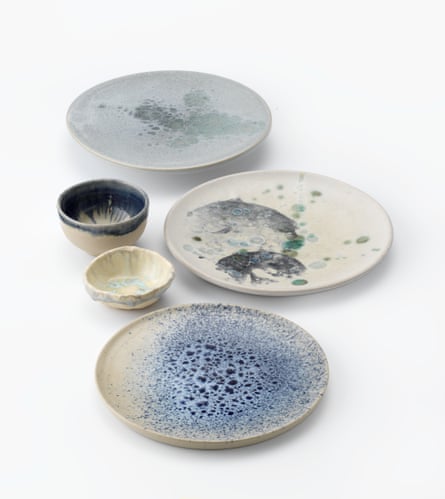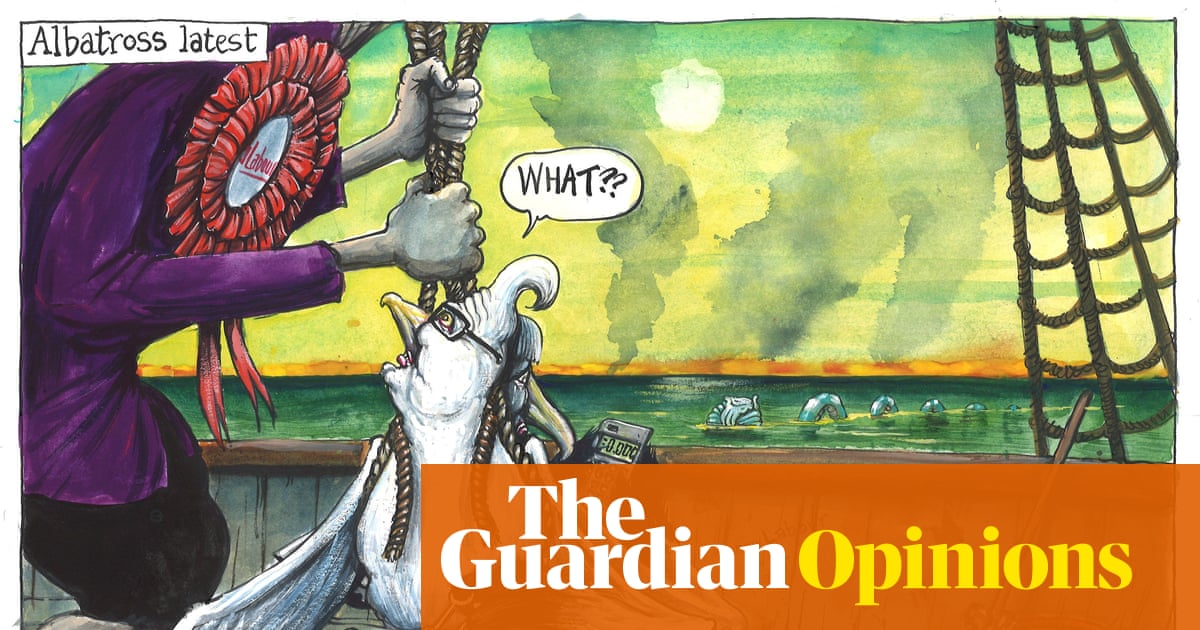When is gastronomy about more than just recipes? When it is New Nordic cuisine: to its advocates, the most influential culinary movement of the 21st century; to its detractors, a school of foodie puritans who have spent the last two decades sucking the joy out of dining and injecting it with po-faced declarations.
If a decade of breathy Netflix food programming is to be believed, you could delicately tweezer some edible petals and micro-herbs on to locally foraged mushrooms and a bed of ancient grains, serve it with a naturally fermented lemonade, and you’ve got yourself a cracking (if not hugely substantive) New Nordic meal.
In fact, what the movement tried to bring to the table was more than that: a wider philosophy that linked your lunch with the natural world, local culture and tradition, while being evangelical about improving your relationship with all three. As Martin Braathen, the curator of a major new exhibition marking New Nordic’s 20th anniversary pronounces ominously: “A carrot is not only a carrot.”
New Nordic professed a strong interest in food education, public health and nutrition, it carefully tracked ingredients from farm, fjord or forest to table, and had a substantial environmental component. It was aspirationally low waste, low impact and low intervention. At its ambitious best, its chefs took on the challenge of replacing non-native imports such as citrus fruits, by asking questions like: can we create a vinegar that is light enough to imitate lemon juice? Failing that, could we just use ants? (Ants have a lemon-like flavour.)

One dish singled out in Norway’s National Museum’s show New Nordic: Cuisine, Aesthetics and Place is Swedish chef Daniel Berlin’s “iconic” signature celeriac dish – where the vegetable is first grilled over an open fire, then baked in foil for hours. The charred skin is used to make bread, the celeriac roots are used to make a stock, and then a sauce, and a slaw is made from the tops, bringing waste as close to zero as possible.
It is also avowedly seasonal and localist. Over the past two decades, New Nordic has navigated various controversies in a bid to elevate regional identity and folk heritage, and as the Oslo exhibition shows, it extends that enthusiasm to non-culinary local arts and crafts such as decor, architecture, design, visual art, pottery and glassware. Outside, the heady smell of birch smoke drifts through the custom-built pavilion, where they are making coffee over a wood fire – very much like normal coffee, perhaps with a hint of birch smoke.
The exhibition brings in tableware and artworks from some of the New Nordic scene’s garlanded restaurants, as well as maps, farming and fishing tools and photographs which speak to local landscapes as much as the food they produce. “Moss is used both as decor and as an ingredient in broths,” reads one straight-faced caption. Earth tones abound, and drying seaweed, haunches, hides and leaves hang from wooden beams.
All of this began with the 10-point Manifesto for the New Nordic Kitchen, published in 2004. Some of the manifesto’s 12 authors would go on to become household names in Scandinavia and beyond, like Noma’s René Redzipi and Claus Meyer. The signatories were drawn not just from Denmark, Norway and Sweden, but also Greenland, the Faroe Islands and Åland; all 12 were male. Spiritually, it shared something with its Scandi predecessor from a decade earlier, the infamous Dogme 95 cinematic manifesto: ostensibly didactic and po-faced, but in practice more playful and loose (the film-makers nicknamed their manifesto “the vow of chastity”, and then proceeded to break most of their own rules).
Its arrival in the mid-2000s begged the question: what was old Nordic cuisine – what was it replacing, and what was wrong with it? Meatballs, herring, potatoes, stodge, bacon and butter – but the greater complaint was of the excess of imported, unseasonal foods; it was a response to ever slicker global supply chains and culinary homogenisation, more than a protest against the Ikea lunch. In this respect, New Nordic is an heir to Italy’s Slow Food movement, prompted by the arrival of Italy’s first McDonald’s in 1986, or French farmer and activist José Bové’s elevation to national hero in 1999, when he and fellow trade unionists “dismantled” a new branch of McDonald’s in protest against American hormone-treated beef.

“New Nordic pushes back against the global food industry,” Braathen says: prior to its arrival, “we ignored the local”. It places great emphasis on the immediate landscape the restaurant sits in, and a desire to “capture” it in a dish – an idea now frequently cited in British food TV shows.
Two decades is more than enough time in the spotlight to acquire dissenters, too. At its worst, New Nordic can seem dogmatic, chauvinistic, and elitist – little more than smug “bro” auteur-chefs from Michelin-starred restaurants showing off to each other, and their rich diners. The backlash has grown in recent years. “I have eaten in Michelin-starred New Nordic restaurants where presenting the menu felt more like a lecture than a treat.” wrote Petri Burtsoff in Monocle last month, in a piece that claimed the “fiddly”, “fussy” and “pretentious” style has fallen out of favour in Scandinavia itself, replaced by something more hearty, relaxed and simple.
Copenhagen’s Noma – five-time winner of Best Restaurant in the World, for those keeping score – announced they were closing in 2023, to great fanfare, although still haven’t pulled the plug, with reservations filled until the end of this year, for a tasting menu that costs a cool 4,400DKK, or £500 per head. For an institution inclined to grandiose talk about sustainability, recent revelations that Noma’s business model seems to have been built on legions of unpaid interns, or stages, have undermined fine dining’s reputation at large.
In Noma’s case, the Financial Times found that up to 30 stagiaries were working in the kitchen in 2019, almost as many as their 34 paid chefs at the time. It’s all very well treating your hand-foraged molluscs with care – one New Nordic legacy is the frequency with which TV chefs talk sanctimoniously about “respecting the ingredients” – but what about respecting the sentient beings you’re getting to clean them?

For all of its elevation of traditional, preindustrial techniques, New Nordic always claimed to have remained a living, breathing movement. Oslo-based ceramicist Anette Krogstad, whose hand thrown stoneware appears in the exhibition, stresses that point. Like the food on the table, her plates themselves are seasonal – some designs more suited to winter, others to summer. But Krogstad is keen that these lofty ideas are not on a pedestal, or out of reach. “I don’t want people to buy my ceramics and then put them away, and save them for a nice dinner,” she says: “I want them to be used every day.”
Can the same be said about the trickle-down effect of New Nordic’s fine-dining masters on local eateries? Just beyond the museum, the cheerful cafe Elias makes no mention of New Nordic principles – the head chef had not heard about the new exhibition and said he would probably be too busy to visit – but they are on display nonetheless. I ate a meltingly tender, deep-red elk carpaccio, sprinkled with tart lingonberries, bitter rocket, the crunch of pine nuts and red onion, and a salty local organic cheese, Holtefjell. For dessert, the cloudberry panna cotta was made with cream and tjukkmjølk (a soured milk) from Røros, to the north of Oslo. The meal came to £50 for two courses, a soft drink and tip, pretty affordable by Oslo standards. To pull off the trick of being sophisticated and surprising, but still accessible and unpretentious – that’s the sweet spot.
Walk further around the affluent Tjuvholmen neighbourhood surrounding the museum, though, and the gastronomic upheaval lauded inside its walls becomes less tangible. Among the Kapoor, Gormley and Bourgeois sculptures, and underneath the waterside apartments, the restaurant options included Eataly, Los Tacos, Entrecote, Big Horn Steakhouse, New Delhi and Yokoso sushi and ramen. The food huts outside sold macarons and gelato.
This isn’t to say New Nordic cuisine has proven a failure, just that its advocates are fighting an uphill battle against the Instagram-enabled appeal of the same global smorgasbord you might find in London, Melbourne, Los Angeles or Barcelona. But is New Nordic over? For Braathen, this exhibition is indeed a retrospective; but while we might be talking about it in the past tense, there is clearly a lot more work to be done – and some of its advocates are refusing to call time at the natural wine bar. “While the Nordic food movement has been a success by any standard, the vision that guides it still holds a great deal of unrealised potential,” said last month’s report from December’s New Nordic Food Summit.
To realise this potential, in the face of the global food and farming industries, will be a challenge. Soaring food prices have caused concern in Norway recently, as in so much of the world – with prime minister Jonas Gahr Støre promising to address them ahead of September’s election. The cause of these high food prices? Extremely high tariffs on imports, to protect Norwegian farmers – it is hard to imagine easing that protectionism will do much to support New Nordic Cuisine.
For Noma co-founder Meyer, the movement’s legacy should be to blend into the background. “Now we should just move on, talk less about the New Nordic cuisine and just let it become a part of our lives,” he said back in 2015. It’s a noble intention – but the struggle to extol the virtues of the local against the global food industry will not be won easily.

 3 months ago
44
3 months ago
44

















































